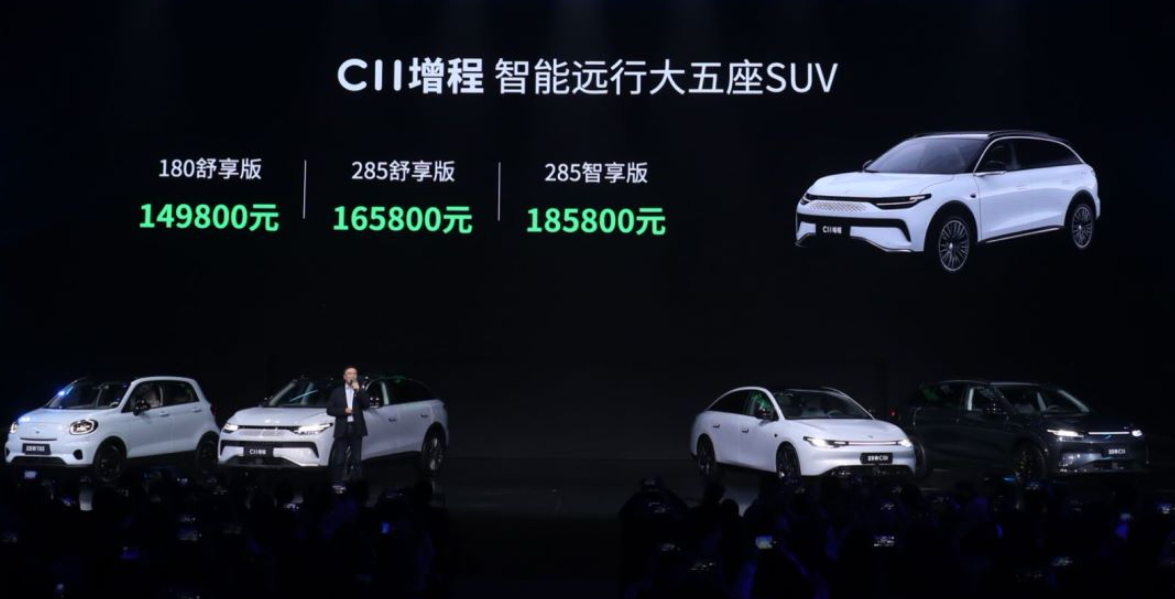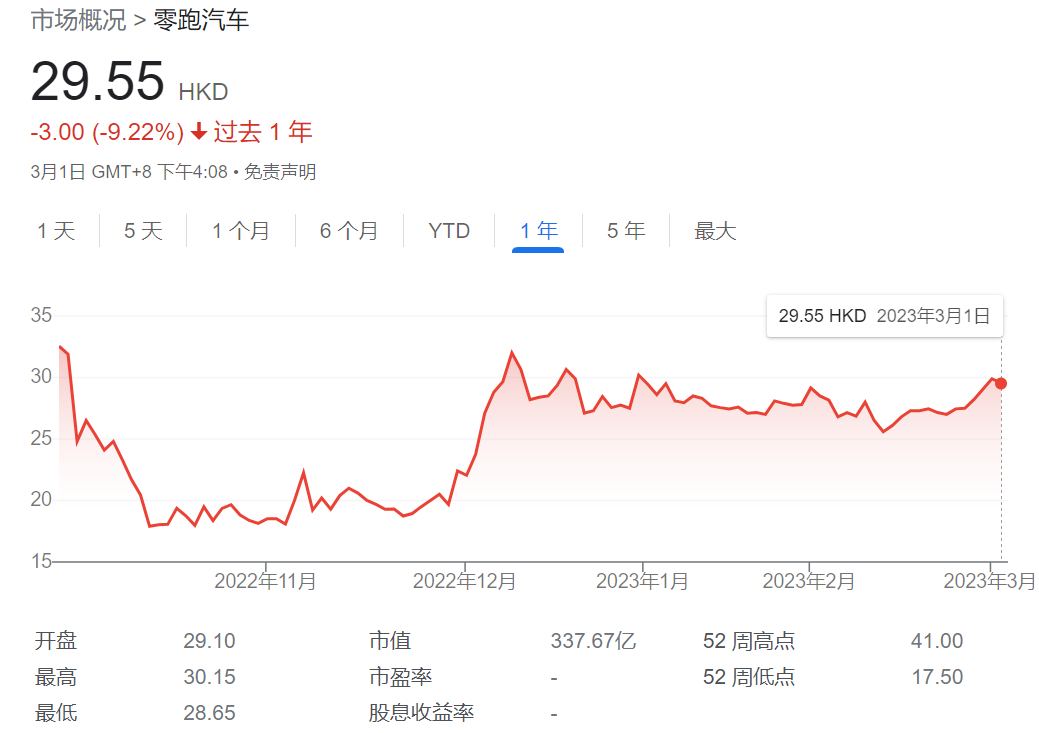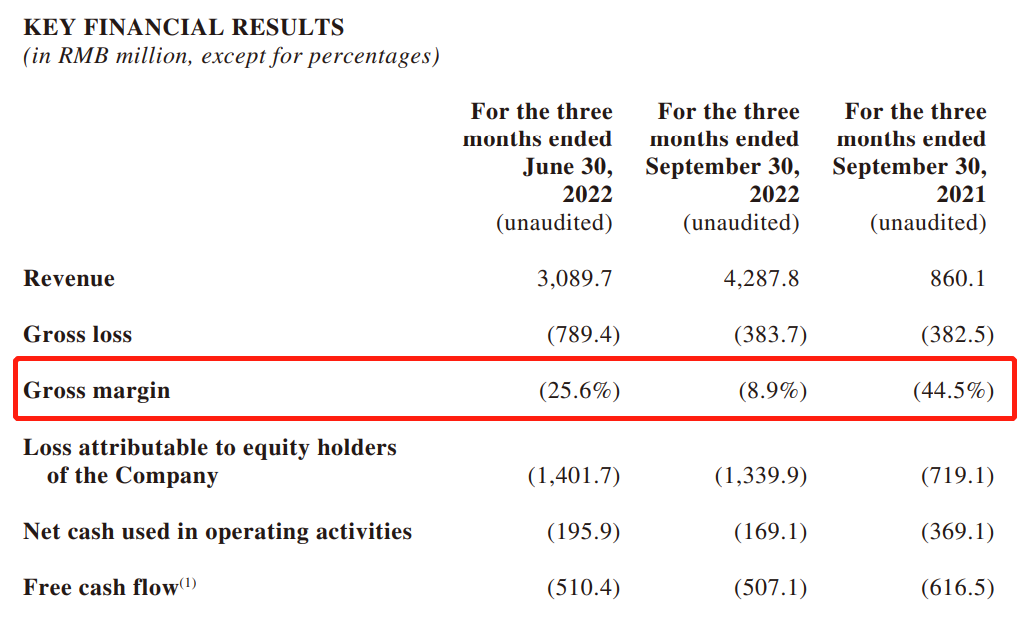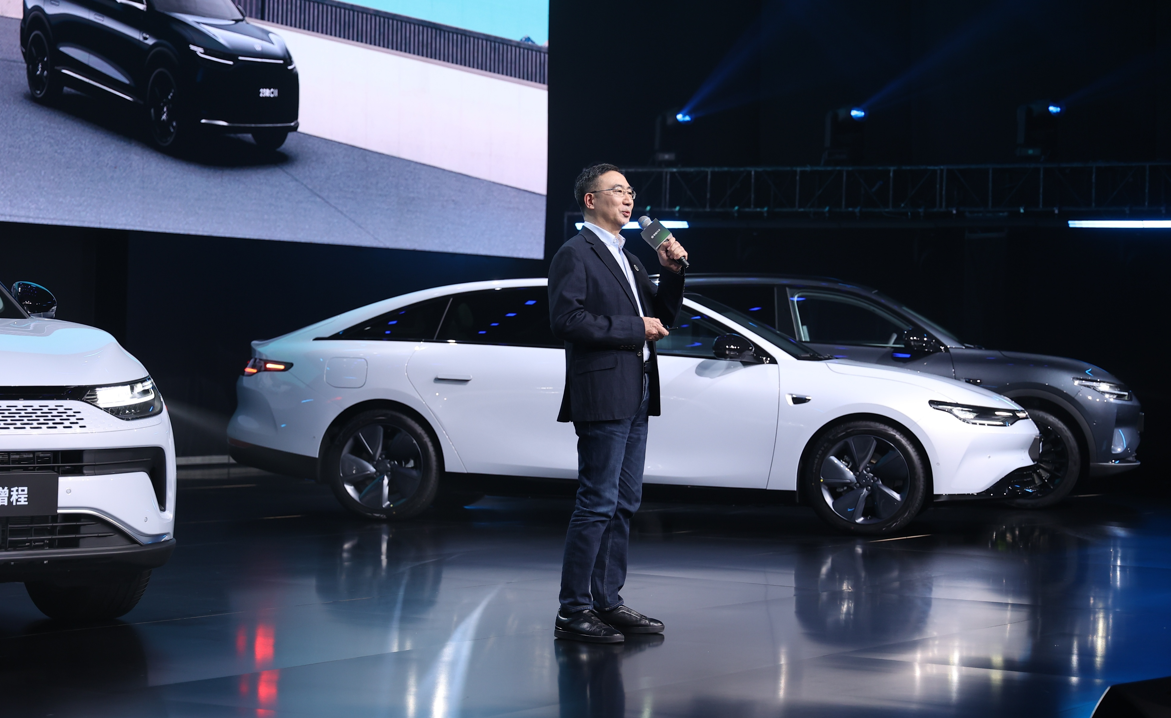Zero Run has come out in force in 2023, with a lot of energy.
They hosted a grand new product launch, which not only invited Zhejiang Satellite TV to film but also had Hua Shao as the emcee, with all four models of their 2023 lineup unveiled.
This performance has little to do with products, technology, or other elements, but focuses only on one thing: a reduction in price across the entire lineup:
Last year, Zero Run’s high-end C01 model had its 2023 pricing reduced from the original 1.938-2.868 million yuan to 1.498-2.288 million yuan, with the highest reduction of nearly 60,000 yuan;
The 2023 Zero Run C11 EV model sells for 1.558-2.198 million yuan, a reduction of 20,000-30,000 yuan compared to the previous 1.858-2.398 million yuan; the just-launched long-range version is priced between 1.498 million and 1.858 million yuan, with further pricing reductions;
The T03 compact car, which is positioned as an A0 class vehicle, has been reduced from the original 0.825-0.995 million yuan to 0.599-0.899 million yuan, with the highest reduction exceeding 20,000 yuan.
At the same time as the price reduction, all of Zero Run’s models have retained the same level of configuration, so it can be said that the price has been reduced but the amount has not.
This move is not surprising, as since Tesla wielded the price-cutting knife against its competitors earlier this year, most mainstream new energy vehicle companies have followed suit and issued promotional sales.
However, Zero Run is different. From the updated price list, the highest price of all Zero Run models is 2.288 million yuan. The subtle point of this price is that it largely avoids direct confrontation with the leading electric vehicle companies in the market.
Who are the leading electric vehicle companies? Tesla, BYD…
While lowering prices, the chairman of Zero Run, Zhu Jiangming, stated in a post-event press conference that all of the company’s subsequent models will be released in both long-range and pure electric configurations.
Thus, we can see that in the face of the tightening of the new energy vehicle market, Zero Run’s second hit after going public has chosen a combination of avoiding direct competition and offering both long-range and pure electric versions.
What did Zero Run say at the new product launch?
At this launch, Zero Run brought their entire 2023 lineup, as well as the recently opened pre-sale for the C11 long-range model.
During half of the event, Zero Run compared the configurations of these models to those of similar products in the market, including new energy vehicles such as certain Han, certain Song, certain Ma…, as well as similar gasoline vehicles such as the C certain V and the Kai certain R.But the real climax happened at the end of the launch event, when the numbers announced by LI were really “top-notch”.

LI’s previously positioned high-end pure electric C-Class sedan C01, with the highest price range, will offer 5 versions to choose from in the 2023 new model based on range, intelligent configuration, and performance. The cheapest version, 525 Shuxiang Edition, is priced as low as 149,800 yuan, and the most expensive version, 630 Four-Wheel Drive Performance Edition, is priced at 228,800 yuan.
Compared with the old models, the price range has dropped between 15,000 yuan and 58,000 yuan, with the largest drop being the Four-Wheel Drive High-Performance Edition, which has a drop of about 1/5 of the selling price.
The price of LI SUV C11 pure electric version has also been reduced. Among the 4 versions available in the 2023 model, the lowest-priced version, 500 Shuxiang Edition, is priced at only 155,800 yuan, and the most expensive version, 580 Four-Wheel Drive Performance Edition, is priced at 219,800 yuan.
Compared with the old models, the price has also been reduced by 20,000 to 30,000 yuan.
The newly released LI C11 extended-range version offers 3 versions based on different pure electric ranges and intelligent configurations. They are the 180 Shuxiang Edition priced at 149,800 yuan, the 285 Shuxiang Edition priced at 165,800 yuan, and the 285 Zhixiang Edition priced at 185,800 yuan.

In addition to these three models, LI’s low-priced car T03 has also joined the price reduction army, with the cheapest 200 Light Shuxiang Edition selling for 59,800 yuan, and the highest-equipped 403 Zhixiang Edition selling for only 89,900 yuan, with a maximum reduction of 22,600 yuan.
The above are the prices of all LI models in 2023, but at the same time, their functionalities have been increased.
Take C01 as an example, LI has added 4 functions including functional maps, camping mode, open APP ecology, and a brand new desktop UI design language to the latest models.
Adding Features While Lowering Prices: Even Master Kong Noodles Doesn’t Dare to Play This Game…
To quote Zhu Jiangming present at the scene, “these four car models will redefine the value standards of 150,000-200,000 RMB car models with 30-40,000 RMB configuration experiences.”
This price logic is easy to understand. Following Tesla’s price reduction on all its models at the end of last year, domestic new energy vehicle manufacturers had to follow suit to maintain price competitiveness, and used the strategy of high configuration and low prices to stabilize their position.
Overall, this kind of direct “all-in” operation is rare for independent new energy automobile brands.
However, this is actually a one-two punch from LI (CHJ) amid increasingly fierce market competition following its successful listing on the Hong Kong Stock Exchange.
“Avoiding War” and Increasing Range: LI’s Combination Punch is Here
First, let’s talk about “Avoiding War.”
Let’s start with the prices. The logic behind LI’s price cuts this time is not just about high prices and low configurations.
As is known to all, LI’s true origin dates back to its A0-class T03 car. After T03 stabilized its position, LI successively launched the C11 electric version and the higher-priced C01.

Prior to the price cut, the highest price of the C01 was up to 286,800 RMB, which at the time was in direct competition with the popular car models such as the Tesla Model 3, the BYD Han, the XPeng P7, and the later BYD Dolphin.
This price range is also the main battlefield where new energy vehicle products confront each other. The last time the Model 3 directly lowered the price to below 230,000 RMB made this battlefield even more bloody.
LI directly lowered the price ceiling of the C01 to 228,800 RMB, which can be seen as “withdrawing from the battle” at a critical juncture where the situation escalates.
How to understand it?
According to data from the China Association of Automobile Manufacturers, C01 sold 561, 1303, 1757, and 1194 units in the first 4 months of its official launch last year, which is not outstanding compared to other popular car models such as Model 3.
LI’s C01 brand-uplift strategy has not been recognized by the market. This can also be seen from its stock price performance after it went public.
 Last September, Zéro Émission (Zero Run) officially landed on the Hong Kong Stock Exchange with an issue price of HKD 48/share. As of yesterday’s close, its shares had fallen by nearly 40% to HKD 29.55/share.
Last September, Zéro Émission (Zero Run) officially landed on the Hong Kong Stock Exchange with an issue price of HKD 48/share. As of yesterday’s close, its shares had fallen by nearly 40% to HKD 29.55/share.
With a limited financial background, it would make sense for the company to avoid direct competition and instead choose to compete with less competitive opponents. In addition to avoiding a head-on fight, during the media group interview after this press conference, Zéro Émission revealed its “trump card” move: series-parallel hybrid powertrains.

Zhu Jiangming believes that the trend of hybrid vehicles, including extended-range hybrids, will continue to grow in the new energy vehicle market in the next 3-5 years. Therefore, Zero Run will develop both pure electric and extended-range versions of its B and C-level vehicles and release them simultaneously.
It follows that the C11 Extended-Range Edition is only the beginning of Zero Run’s switch to extended-range vehicles.
In fact, the extended-range layout is indeed a viable route for Zéro Émission, for two reasons:
First, in the absence of fully established energy infrastructure, widespread fast charging, and a lack of substantial progress in vehicle range, the versatility and economic efficiency of the extended-range powertrains that run both on fuel and electricity fulfill customers’ needs.
The wide acceptance of hybrid vehicles on the market is largely based on the advantages listed above. So in today’s new energy vehicle market, more and more automakers are adopting a dual strategy of pure electric and extended-range vehicles, such as NETA and Wanjie.
Second, the overall cost of an extended-range car is lower than that of a pure electric vehicle because it does not require a battery pack of the same size as some same-level pure electric vehicles. Car companies will also spend less on the cost of batteries.
It should be noted that battery prices have been a major headache for new energy vehicle companies in the past two years, and at times, battery costs have accounted for 40-50% of the total vehicle cost.
Therefore, the combination of “avoiding war” and an extended-range/pure electric layout is a winning combination approach for rapidly expanding market share in the new energy vehicle market while minimizing the loss of profits in the “fire zone,” the most intense battlefield.
For Zéro Émission, a small company with a limited financial background, it is indeed a good way out.
In 2023, Zero Run needs to answer these questions.Combination punch is in the front. Whether it can demonstrate its power and achieve the expected effect in the follow-up is uncertain. As for LI itself, two questions need to be considered after determining such tactical actions:
First, what about gross profit?
Since LI went public, the market’s criticism of LI includes R&D investment and gross profit.

The financial report shows that LI’s gross profit margins in the last two quarters of last year were -25.6% and -8.9%, respectively. Although they are still negative, there has been some improvement.
However, this price reduction further compresses LI’s gross profit space, which was already foreseeable.
In addition, pure electric and range extender parallel hybrid means that the same product requires two platforms. The advantage of this approach is that it can provide differentiated products for users, but the disadvantages are equally obvious: the cost-sharing effect of economies of scale is weakened.
Second, when including range extenders as part of the hybrid, how will LI ensure competitiveness when it becomes the choice of the majority?
At present, car companies which have planned range extender series products include Li Auto, NIO, WM Motors, and Landtour, etc. There are some successful cases such as the Ideal and WM Motors, but some have failed to make an impact.
Take Landtour as an example, its brand sales volume has been around 2,000 units for a long time. How well does its range extender models sell? Presumably it is not too good.
In addition, don’t forget that even in the market with a price range of 150,000-200,000 yuan, there are not many hybrid popular models, such as BYD Song and Yuan series, and the recently launched Hafu 2nd Gen Dawei PHEV version, which are all potential competitors that LI needs to face.
By the way, there is also Tesla’s upcoming Model Q, which is priced at $25,000 (about RMB 170,000).
Anyway, the rapid listing of LI resolved the short-term survival problem. This second move at the beginning of 2023 needs to address the demand for “living better”.
Whether this combination of punches will be effective remains to be seen.
This article is a translation by ChatGPT of a Chinese report from 42HOW. If you have any questions about it, please email bd@42how.com.
